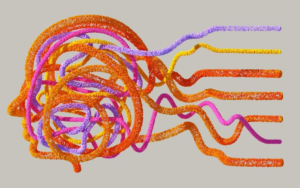Designing Reward Systems That Avoid Manipulation: A Comprehensive Guide
Creating an effective reward system is essential for motivating employees, fostering productivity, and reinforcing organizational values. However, poorly designed reward systems can easily become susceptible to manipulation, undermining trust and reducing overall effectiveness. In this comprehensive guide, we will explore strategies and practical tips for designing reward systems that avoid manipulation, ensuring fairness, transparency, and sustained motivation across your organization.
Why Avoiding Manipulation in Reward Systems Matters
Reward systems that can be manipulated often result in unfair advantages, reduced morale, and distorted performance metrics. Manipulation can appear in many forms, including gaming metrics, misreporting achievements, or prioritizing rewards over genuine contribution. When manipulation seeps in, it can damage organizational culture and diminish trust in leadership.
Common Forms of Reward System Manipulation
- Gaming the Metrics: Employees exploit loopholes or focus only on measurable outcomes that trigger rewards.
- Misreporting: Inflating or falsifying performance data to receive undeserved rewards.
- Short-Term Focus: Prioritizing actions that deliver immediate rewards but harm long-term goals.
- Favoritism and Bias: Rewarding based on personal preferences rather than merit.
Core Principles for Designing Reward Systems That Resist Manipulation
To build resilient reward systems, organizations must consider these foundational principles:
- Transparency: Clearly communicate criteria and processes for rewards.
- Fairness: Develop equitable systems that align rewards with genuine contributions.
- Multi-Dimensional Metrics: Use diverse measures beyond simple numeric targets to evaluate performance.
- Flexibility: Adapt reward criteria as organizational priorities evolve to minimize exploitation.
- Feedback Loops: Encourage continuous feedback to refine and adjust the system.
Step-by-Step Framework for Building Manipulation-Resistant Reward Systems
1. Define Clear and Measurable Objectives
Start by aligning reward objectives with long-term business goals ensuring that these goals are meaningful and measurable across different dimensions.
2. Employ Balanced Scorecards or Multi-Factor Evaluations
Incorporate qualitative and quantitative indicators like teamwork, innovation, and customer satisfaction-not just sales or output volume.
3. Integrate Checks and Verification Processes
Design internal audits, peer reviews, and automated systems to detect abnormal patterns and flag potential manipulation.
4. Promote Ethical Culture and Training
Train managers and employees about ethical behavior and the importance of integrity within the reward system.
5. Use Tiered and Variable Rewards
Vary the size and timing of rewards to discourage gaming behavior and encourage consistent performance over time.
6. Maintain Open Communication
Transparency in the reward criteria and rationale helps reduce misunderstandings and opportunities to manipulate the system.
Benefits of Manipulation-Resistant Reward Systems
Implementing a well-designed, manipulation-resistant reward system offers various benefits that contribute to sustainable organizational success:
- Enhanced Employee Trust – Fair systems foster confidence in management.
- Improved Performance Quality – Multi-dimensional rewards encourage holistic contributions.
- Better Retention – Employees feel valued and fairly recognized.
- Aligned Organizational Values – Rewards reinforce behaviors that support culture and mission.
- Reduced Risk of Fraud – System checks limit exploitation tactics.
Practical Tips to Avoid Manipulation in Your Reward Program
- Involve diverse stakeholders in defining reward criteria to reduce bias.
- Regularly review and update the reward metrics to close loopholes.
- Encourage peer nominations as part of qualitative evaluations.
- Implement “cooling-off” periods to prevent front-loading or rushing results.
- Use technology tools for data validation and anomaly detection.
- Balance individual rewards with team or department incentives.
Case Study: How a Tech Company Revamped Their Incentive System
XYZ Tech, a mid-sized software company, faced declining morale as their sales-focused rewards encouraged aggressive client pitching that often led to quality issues. To address manipulation and misaligned incentives, XYZ Tech redesigned their program by:
- Adding customer satisfaction and code quality metrics to reward criteria.
- Introducing a peer review process to validate sales results.
- Applying quarterly rewards instead of monthly bonuses to encourage a long-term view.
The result? A 20% increase in product quality scores and a 15% improvement in employee satisfaction in just one year, confirming the power of balanced and transparent reward systems.
Summary Table: Manipulation-Prone vs Manipulation-Resistant Reward Approaches
| Aspect | Manipulation-Prone System | Manipulation-Resistant System |
|---|---|---|
| Reward Criteria | Single numeric target (e.g., sales only) | Multi-dimensional metrics (sales, quality, teamwork) |
| Transparency | Opaque, unclear rules | Clear, communicated rules |
| Evaluation Process | Self-reported, unchecked | Peer reviews and audits |
| Reward Timing | Immediate, frequent bonuses | Periodic, tiered rewards |
| Ethical Integration | Minimal ethical guidance | Regular training and cultural emphasis |
Conclusion: Building a Reward System That Promotes Integrity and Motivation
Designing reward systems that avoid manipulation requires thoughtful planning, a commitment to transparency, and continuous refinement. By embedding fairness and ethical standards into your reward design, you empower employees to genuinely excel and align their efforts with organizational values. Remember, the best reward system not only motivates but also builds trust and encourages sustainable success.
Apply the principles and tips outlined in this guide to create a reward system tailored to your workplace that stands resilient against manipulation and drives authentic, rewarding performance.











